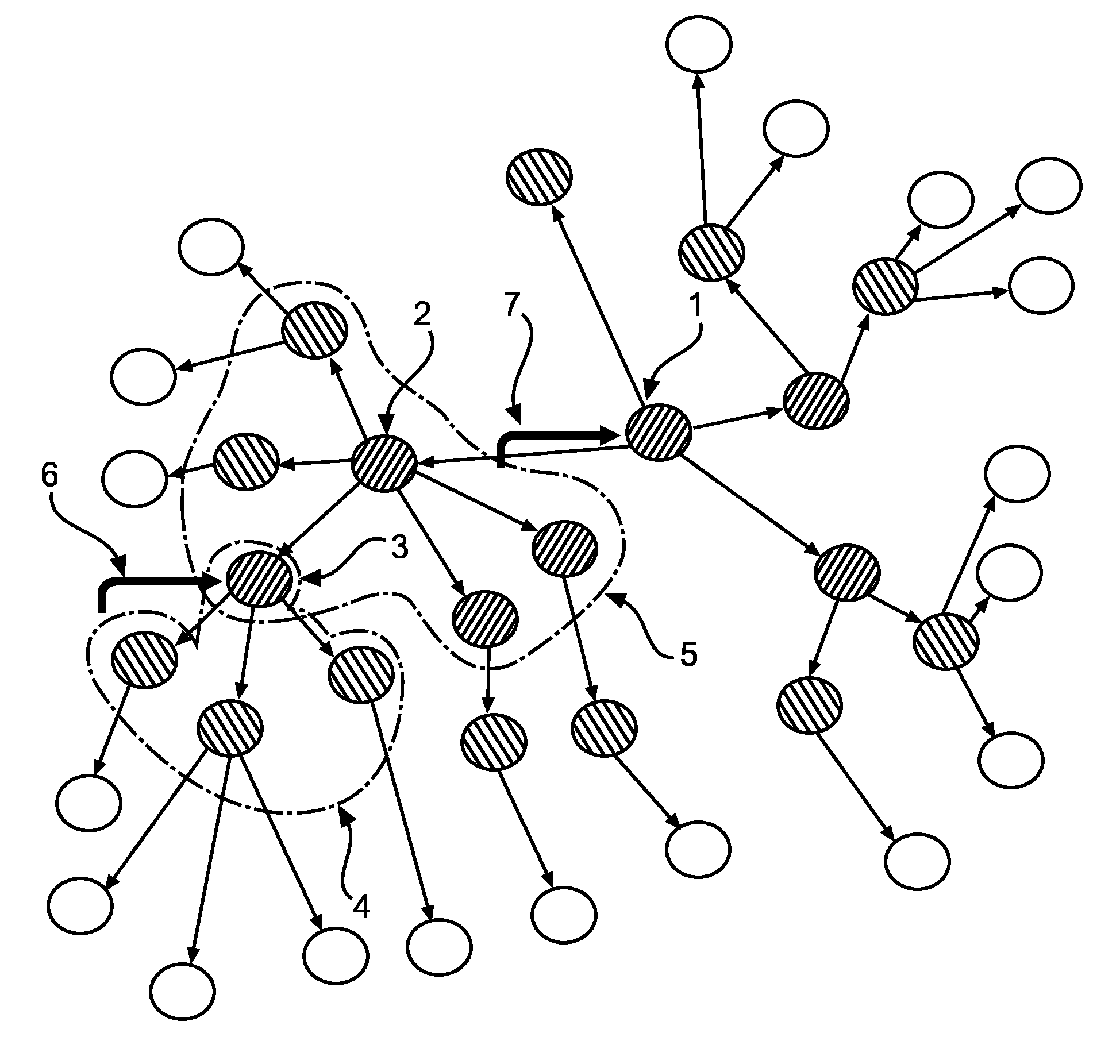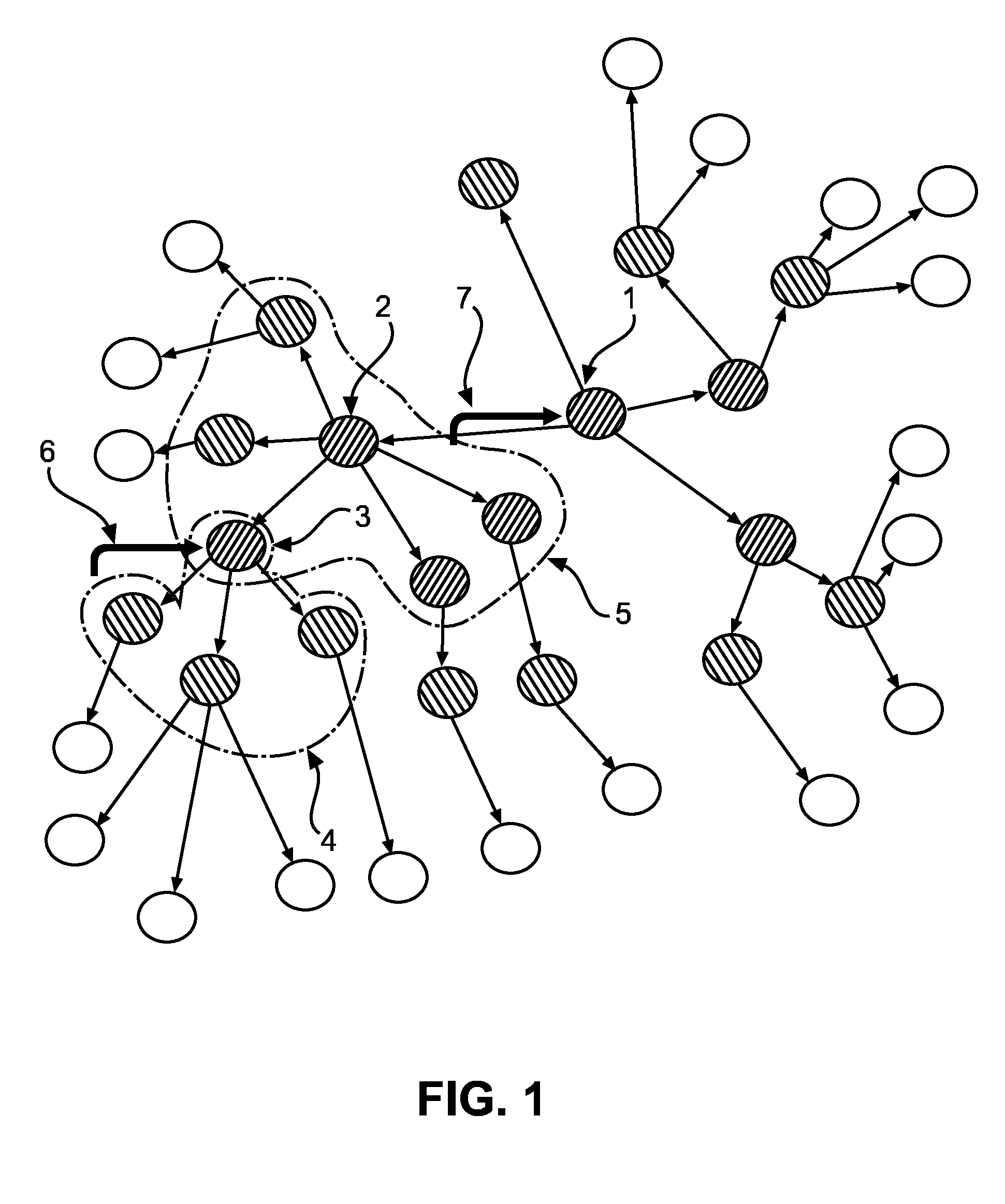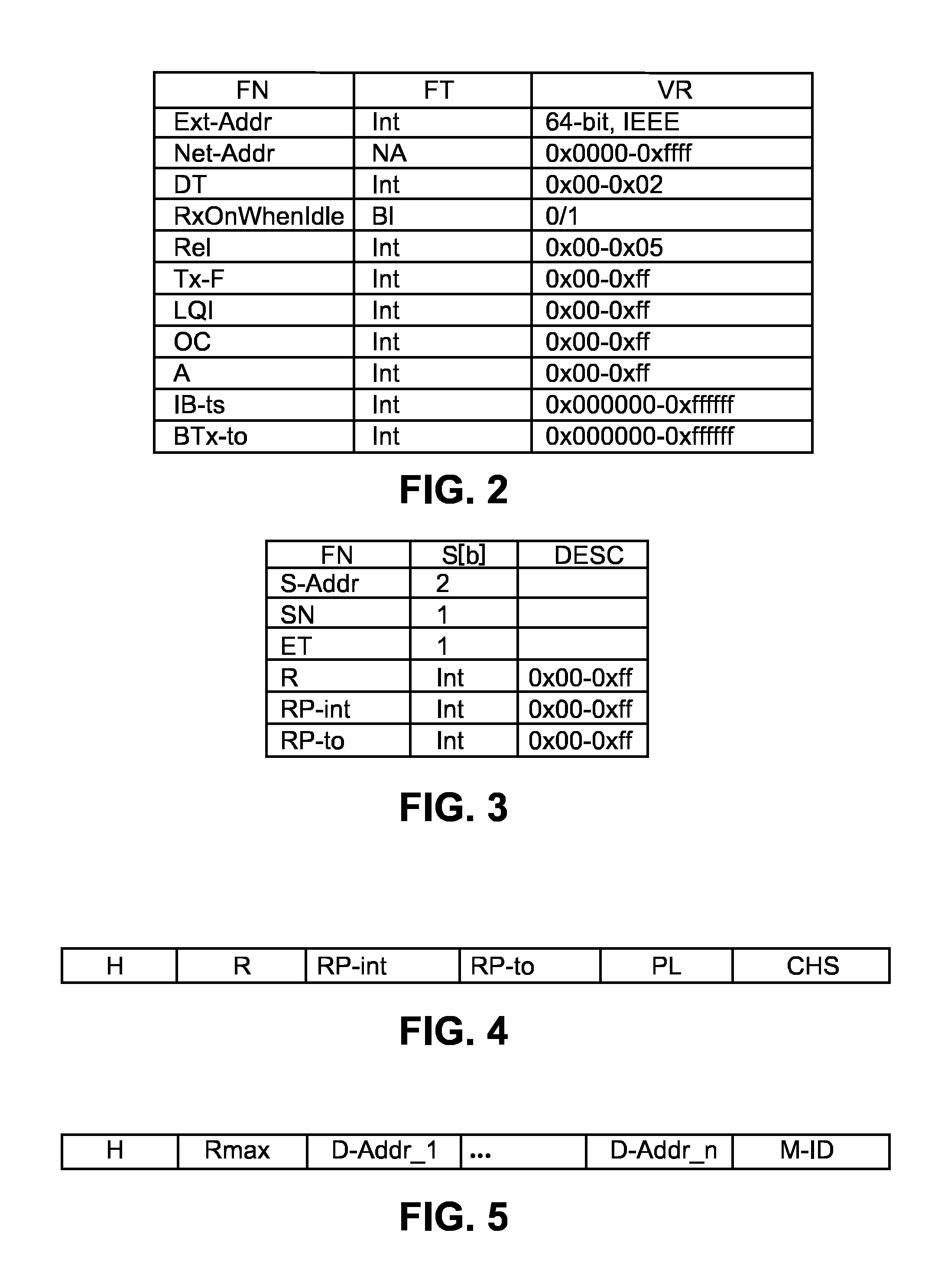Method and apparatus for reducing the length of a packet storm in a wireless mesh network
a wireless mesh network and packet storm technology, applied in data switching networks, digital transmission, network topologies, etc., can solve the problems of affecting the network's performance, so as to achieve sufficient network coverage and reduce the length of the packet storm
- Summary
- Abstract
- Description
- Claims
- Application Information
AI Technical Summary
Benefits of technology
Problems solved by technology
Method used
Image
Examples
first embodiment
[0047]FIG. 6 shows a flow diagram of a broadcast controlling procedure where a status reporting message is generated.
[0048]The procedure starts in step S800 and a broadcast initiator device prepares the content of the neighbor table for recording information about its neighboring devices before the broadcast and the content of the child table for recording information about its children devices before the broadcast (step S801). Then, in step S802, a broadcast transmission is initiated, wherein the initial value of the radius parameter of the broadcast message is set to a value larger than 0. The broadcast transmission is configured not to use the MAC sub-layer acknowledgement. In step S803, the broadcast transaction table is updated to keep a record of the new broadcast transmission. Additionally, the broadcast listening table is used to keep a record of any broadcast transaction that is received from a child device.
[0049]Now, the procedure checks in step S804 whether any valid bro...
second embodiment
[0060]FIG. 7 shows a flow diagram of a broadcast radius calibration procedure according to a
[0061]In step S900 the procedure starts and then, in step S901, all values of the radius parameter R in the broadcast transaction table are compared for all devices which have received the same broadcast message. In step S902, the largest one of the compared parameter values is picked out and inserted into the status report message. The above steps may be added behind at least of steps S806 and S808 of the above broadcast status reporting procedure of FIG. 6.
[0062]Then, it is checked in step S903 if any new device has been added into the status report. If so, the radius parameter R will be compared in step S904 against the radius parameter of the new device(s) and the larger one will be kept in the report (step S905).
[0063]In step S906 it is checked if the status report has to be split into two or more reports. If so, the same radius parameter will be added to the new status reports (step S90...
third embodiment
[0066]FIG. 8 shows a flow diagram of a broadcast radius re-calibration procedure according to a
[0067]The broadcast initiator can use the above status reporting procedure, described in connection with FIG. 6. In step S100, the procedure starts and the above status reporting procedure of FIG. 6 may follow as a subroutine (step S101). Then, it is checked in step S102 if any device is not able to receive a broadcast message or the number of devices not receiving the broadcast message becomes worse. If so, a re-calibration is needed and the procedure continues with step S103. If not, the procedure ends in step S105.
[0068]In step S103, an initial value for the radius parameter is chosen. This value may be larger than the current radius and smaller than a default value, e.g., (current radius+default radius) / 2, so that the re-calibration takes shorter time to complete. Then, it is checked in step S104, based on reported broadcast statuses, whether usage of the new calibration result satisfi...
PUM
 Login to View More
Login to View More Abstract
Description
Claims
Application Information
 Login to View More
Login to View More - R&D
- Intellectual Property
- Life Sciences
- Materials
- Tech Scout
- Unparalleled Data Quality
- Higher Quality Content
- 60% Fewer Hallucinations
Browse by: Latest US Patents, China's latest patents, Technical Efficacy Thesaurus, Application Domain, Technology Topic, Popular Technical Reports.
© 2025 PatSnap. All rights reserved.Legal|Privacy policy|Modern Slavery Act Transparency Statement|Sitemap|About US| Contact US: help@patsnap.com



